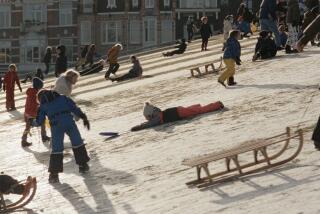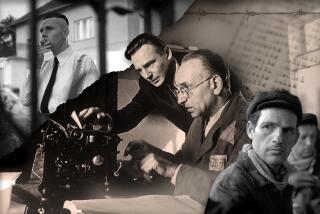‘Anne Frank Remembered’ Explores the Girl Behind the Diary
The elements of Anne Frank’s story are legendary: the narrow stairway behind the bookcase, the diary named Kitty, the almost-boyfriend Peter. But watching and hearing real people who knew her, as a free and precocious schoolgirl in Amsterdam and as a shrunken, lice-covered 16-year-old in Bergen-Belsen, rescues her story from myth and restores it to tragic reality.
The documentary shows us the red plaid diary Anne received from her father on her 13th birthday, how all the beds and desks fit into the tiny annex shared by two families for two years and describes Peter as a “blue-eyed boy with very little intellectual capacity.” It also introduces us to everyday heroine Miep Gies, the employee of Otto Frank who kept the families fed and informed, and Hanneli Goslar, Anne’s childhood friend who by extraordinary chance was reunited with Anne in her final destination, Bergen-Belsen.
“It was mainly an educational film,” said Robyn Neuland, 14, of Orange, who had read half the diary and came because her mother wanted her to see it. And indeed, Robyn said she saw Anne Frank in a new light. “People thought she was a bad child. You never knew that from the book,” Robyn said. “In my mind, she was still a good kid.”
Dutch neighbors describe Anne as overindulged by an unusually nurturing papa, who, like others around her, did not see her as a budding genius or a future saint. Rather, those who knew her as a child described her as naughty, willful and impertinent.
Caroline Cohen, 11, of Irvine, also came with her family. And while she had seen exhibits and read the diary, she said she had not known details of Anne’s fate after being discovered by the Nazis.
“This had more pictures of the death camps, or concentration camps. What I saw before was more about her in hiding, but this was more stuff about when she died and of the people who survived.”
The horror of the death camps is mostly implied by grainy footage focusing on the symbolic--a woman on her knees pleading, the vacant glance of a Nazi guard passing a doomed child. The worst experiences are described rather than shown.
Caroline said, “It was depressing, but it was a good movie.”
The film is not as visually violent as some other depictions of the Holocaust, such as “Schindler’s List,” but the documentary format includes subtitles and lengthy interviews and may be too wordy for younger children. Besides, Caroline said, “it might be too sad for them.”
Viewed as a normal teenage girl, stuffing a borrowed bra with “cotton wool,” curious about sex and furious at dimwitted adults, this Anne seemed to reach across five decades to young girls today.
But Caroline wasn’t sure she could relate. It was, after all, another time, another place.
Still, as much as its stated intent as a warning to extremists, the film offers a timeless message to all from an ordinary girl caught up in extraordinary events beyond her control.
As Anne wrote in her diary: “Where there’s hope, there’s life.”
More to Read
Sign up for our Book Club newsletter
Get the latest news, events and more from the Los Angeles Times Book Club, and help us get L.A. reading and talking.
You may occasionally receive promotional content from the Los Angeles Times.






